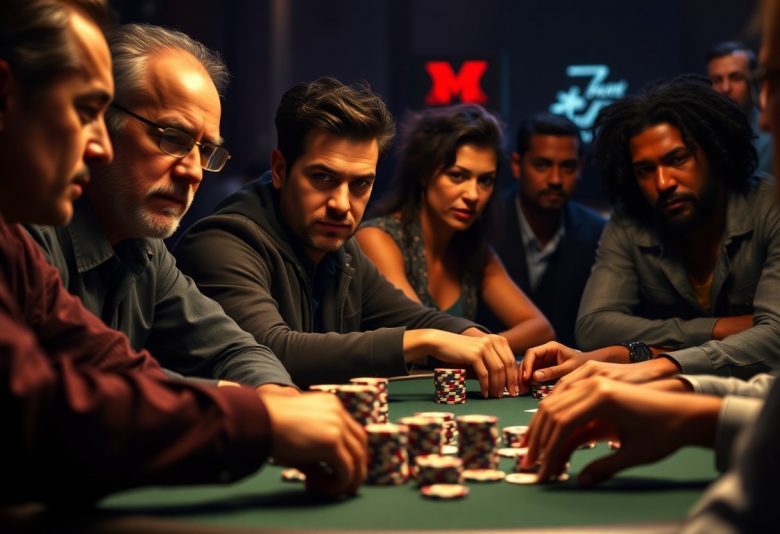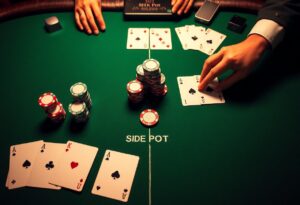Techniques for bluffing in poker can significantly enhance your game and elevate your level of play. Understanding timing, reading your opponents, and mastering your body language are vital skills that top players leverage to win pots even with weaker hands. In this post, you will discover expert tips on how to execute successful bluffs and recognize when it’s best to fold. By honing these techniques, you can strike fear into your opponents and gain control of the game, turning the tables in your favor.
Understanding Bluffing
The art of bluffing in poker is not merely about deception; it’s about manipulating perceptions and making your opponents question their own hands. Knowing when and how to bluff can make a significant difference in your overall strategy, creating opportunities to win pots even when your cards are not favorable. Understanding the dynamics of the table and reading your opponents are key elements that will enhance your bluffing skills.
The Psychology Behind Bluffing
With a solid grasp on the psychology of poker, you can elevate your bluffing game. Bluffing depends on crafting a story that aligns with the betting behavior you’ve established. Understanding your opponents’ tendencies, motivations, and mental states allows you to make calculated moves that can either intimidate or confuse them into folding their best hands.
Types of Bluffs
Bluffing can take various forms in poker, categorized by strategy and intent. Here are key types of bluffs:
- Pure Bluff: Total reliance on a weak hand.
- Semi-Bluff: A strong possibility of improving your hand.
- Big Bluff: A bold bet or raise in desperate situations.
- Continuation Bet: Continuation of aggression after the flop.
- Value Bluff: A bet with the intention of extracting value.
After understanding these different types, you can decide when to implement each one effectively.
| Type of Bluff | Explanation |
| Pure Bluff | Complete absence of a good hand. |
| Semi-Bluff | Betting with potential to improve your hand. |
| Big Bluff | A large bet based on desperation. |
| Continuation Bet | Further betting after showing strength. |
| Value Bluff | Bluffing to entice call with weaker hands. |
Bluffing is a skill that demands keen observation and psychological understanding, fostering not only a better understanding of the game but also the dynamics at play. By utilizing the right type of bluff in various situations, you can manipulate your opponents effectively. Your skill in this area could lead to fewer losses and greater profits in your games.
- Observation: Watch your opponents closely.
- Timing: Choose the right moments to bluff.
- Emotion: Control your own emotional state.
- Consistency: Maintain a consistent playing style.
- Storytelling: Create a believable narrative.
After you develop an understanding of these elements, you can build a solid foundation for effective bluffing.
| Key Element | Importance |
| Observation | Key in understanding opponents. |
| Timing | Ensures successful bluffs. |
| Emotion | Maintaining composure enhances effectiveness. |
| Consistency | Creates a reliable playing image. |
| Storytelling | Helps convince opponents to fold. |
Also, mastering the art of bluffing provides you with the tools to manipulate the game to your favor. By aligning your actions with the various types of bluffs, you can increase the element of surprise and elevate your overall strategy.
Recognizing Bluff Opportunities
There’s a fine line between a successful bluff and a costly mistake. To master the art of bluffing, you must train your eyes to spot the right moments to execute your strategy. This involves understanding the flow of the game, assessing your opponents, and being aware of the board texture. Opportunities to bluff become clear when the right conditions align, such as when your opponents show weakness or you represent a strong hand based on your prior actions.
Reading the Table Dynamics
On the felt, understanding the dynamics of the table is important for making informed decisions. Pay close attention to how your opponents react to different situations—are they aggressive or passive? The more you recognize patterns in their betting habits, the better equipped you will be to identify potential bluffing opportunities. A shift in the atmosphere can signal a window of opportunity, making it imperative to remain observant and adaptable.
Identifying Opponent Tendencies
Reading your opponent’s habits can greatly enhance your bluffing prowess. With careful observation, you can spot moments when they might be vulnerable or misreading the strength of their hand. Certain players may frequently fold to aggression, while others are more inclined to call down, giving you insight into the best times to bluff.
Bluffing successfully depends on how well you can dissect and analyze your opponents’ reactions. Identify their tendencies—do they fold easily under pressure, or are they more inclined to chase with weaker hands? By noting these behaviors, you can create a targeted approach that enhances your chances of success. Recognizing when an opponent is showing weakness or indecisiveness allows you to deploy strategic bluffs when they are least expected, potentially leading to a hefty pot in your favor.
Techniques for Effective Bluffing
All successful bluffs require a blend of strategy, psychology, and timing. To effectively bluff, you must recognize key aspects like your opponents’ tendencies, table dynamics, and your overall betting pattern. Engaging in well-timed bluffs with smart betting strategies can significantly enhance your chances of deceiving even the savviest rivals, making it vital to master these techniques for a winning edge.
Timing Your Bluffs
About timing your bluffs is not just about the moment; it’s about understanding the flow of the game. Pay attention to the betting patterns and the perceived strength of your opponents’ hands. Bluff during moments when your opponents are likely to fold, such as on the turn or river, when the board appears to favor your betting narrative or when the betting action suggests weakness.
Betting Strategies for Bluffing
To effectively implement your bluffing strategy, consider the context of your bets, including the size and frequency. A well-timed, larger bet can signal confidence, prompting opponents to second-guess their hands. Conversely, smaller bets may invite curiosity, making players more inclined to call. Choose the right moments to blend your bluffs with genuine hands to fortify your overall strategy.
At the core of effective betting strategies for bluffing is the need to establish a consistent betting pattern that adds credibility to your bluffs. When you vary your bet sizes, consider how this affects the perception of your strength. A common tactic is to follow up a strong play with a bluff of similar size, thereby leveraging the trust you’ve built. Coupling this approach with an understanding of your opponents’ tendencies enables you to exploit their weaknesses and increases your chances of a successful bluff.
Common Mistakes to Avoid
Keep your focus on recognizing common pitfalls when bluffing in poker. Many players falter by either going too far or not using their cards wisely. Avoiding these blunders can help you refine your bluffing skills and become a more formidable opponent at the table. Always assess your situation carefully and control your urges to enact complex strategies that may backfire.
Over-Bluffing
By allowing your emotions to drive your actions, you risk becoming predictable and transparent at the table. Over-bluffing can lead to losing credibility with experienced players, as they can easily call your bluffs when frequency becomes your pattern.
Misreading Opponents
Across the table, your opponents reveal their play styles through their actions. Failing to accurately interpret their behaviors can lead to costly mistakes, including unnecessary bluffs and miscalculations about their hands.
Hence, developing a nuanced understanding of your opponents is important. Pay attention to their betting patterns, body language, and facial expressions, as these can provide vital clues about the strength of their hands. Learning to read your opponents not only prevents you from misreading their intentions but also allows you to tailor your strategy effectively. Engaging actively with your opponents can elevate your bluffing game significantly, enhancing your chances of success and minimizing risks at the table. Stay vigilant and practice keen observation to improve your poker skills.
Learning from Top Players
Many aspiring players can elevate their game by studying the techniques of top poker professionals. These seasoned players possess an innate ability to read opponents and manipulate situations at the table. By analyzing high-stakes matches and dissecting the strategies employed by the best, you can gain valuable insights into the art of bluffing, enhancing your own strategy and decision-making abilities.
Famous Bluffing Stories
Players often recount legendary bluffing moments that have become iconic in the poker world. These stories exemplify how audacity and keen psychological insight can turn the tide in a match. Learning from these thrilling tales will inspire you to embrace bold strategies and expand your understanding of bluffing’s psychological dimensions.
Strategies from the Pros
Any successful poker player will tell you that understanding how to bluff effectively is more than just acting. It’s about mastering timing, recognizing your opponents’ tendencies, and knowing when to apply pressure. Adopting the right tactics involves not just aggressive play but also employing subtlety to mislead opponents. You must be keenly aware of your table image and maintain a balance between risk and reward, ensuring that your bluffs are believable and can lead to profitable outcomes when executed correctly.
Understanding the nuances of effective bluffing is an ongoing journey. By focusing on elements like positioning, table dynamics, and your own playing style, you can refine your approach. A successful bluff isn’t merely about convincing your opponents that you hold a strong hand; it’s about subtly influencing their decision-making process and leading them to doubt their own cards. Your ability to gauge their reactions and adjust your strategy accordingly will be the key to becoming a proficient bluffer.
Practicing Your Bluffing Skills
Once again, honing your bluffing skills is imperative for becoming a successful poker player. You can incorporate various strategies and techniques to practice, which will not only enhance your confidence but also develop your intuition in reading opponents. Regular practice will help you become more comfortable with making bold moves, allowing you to execute bluffs more effectively during real games.
Simulation Games
The best way to refine your bluffing abilities is through simulation games. These platforms provide a risk-free environment for you to explore different bluffing techniques and experience various player reactions. Engaging in these simulations allows you to develop your skills while analyzing how effective your bluffs can be against different strategies.
Review and Analysis
Above all, reviewing and analyzing your bluffing attempts is vital for improvement. This process allows you to identify what worked, what didn’t, and how different situations influenced your decisions. By observing your own gameplay and those of top players, you can gather insights that elevate your strategic approach.
Understanding the dynamics of your bluffs can significantly improve your game. As you analyze your gameplay, pay attention to the context of your bluffs; consider the table dynamics and the reaction of your opponents. Use this information to adapt your strategies accordingly. Additionally, focus on maintaining a balance between your bluffs and strong hands to keep your opponents guessing. Ultimately, the more thoughtful analysis you conduct, the better equipped you will be to navigate high-pressure situations at the poker table.
Final Words
From above, you have explored the sophisticated techniques and strategies employed by top poker players to master the art of bluffing. By using timing, position, and psychological cues, you can enhance your gameplay and elevate your chances of success at the table. Implementing these insights into your poker strategy not only sharpens your skills but also helps you read your opponents more effectively. As you practice these methods, you’ll gain greater confidence in your play, ultimately leading to improved outcomes in your poker endeavors.




